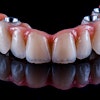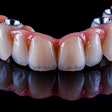Reproduction pressures and rising fertility explain why women suffered a more rapid decline in dental health than did men as humans transitioned from hunter-gatherers to farmers and more sedentary pursuits, according to a University of Oregon anthropologist.
His conclusion follows a comprehensive review of records of the frequencies of dental cavities in both prehistoric and living human populations from research conducted around the world. A driving factor was dramatic changes in female-specific hormones, said John Lukacs, a professor of anthropology who specializes in dental, skeletal, and nutritional issues, in a press release.
His conclusions are outlined in the October issue of Current Anthropology. The study examined the frequency of dental caries by sex to show that women typically experience poorer dental health than men. Among research reviewed were studies previously conducted by Lukacs. Two clinical dental studies published this year (one done in the Philippines, the other in Guatemala) and cited in the paper, Lukacs said, point to the same conclusions and "may provide the mechanism through which the biological differences are mediated."
"The role of female-specific factors has been denied by anthropologists, yet they attain considerable importance in the model proposed here, because the adoption of agriculture is associated with increased sedentism and fertility," Lukacs said. "I argue that the rise of agriculture increased demands on women's reproductive systems, contributing to an increase in fertility that intensified the negative impact of dietary change on women's oral health. The combined impacts of increased fertility, dietary changes, and division of labor during the move into agricultural societies contributed to the widespread gender differential observed in dental caries rates today."
Lukacs' meta-analysis looked at both prehistoric anthropological and modern health records. He repeatedly found that increases in cavities go in favor of women in adulthood. Lukacs' review found that women's higher rates of cavities are influenced by three main changes:
- Female sex hormones
- The biochemical composition and flow rate of saliva. Women produce less saliva than men, reducing the removal of food residue from the teeth.
- Food cravings, immune response, and aversions during pregnancy. Lukacs points to findings that women crave high-energy, sweet foods during the third trimester, as well as an aversion to meat in the first trimester.
How the factors combine to contribute to higher risk of cavities in women as they age is not fully documented or understood, he wrote in the study. "However, if hormonal and physiological factors work in an independent or additive manner, their impact on women's oral health could be significant."















